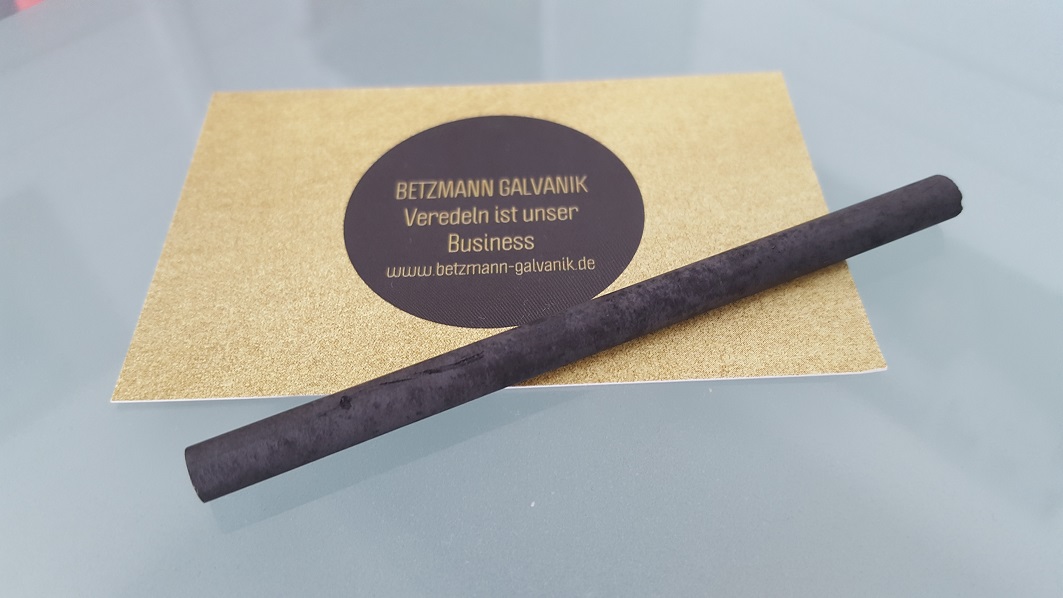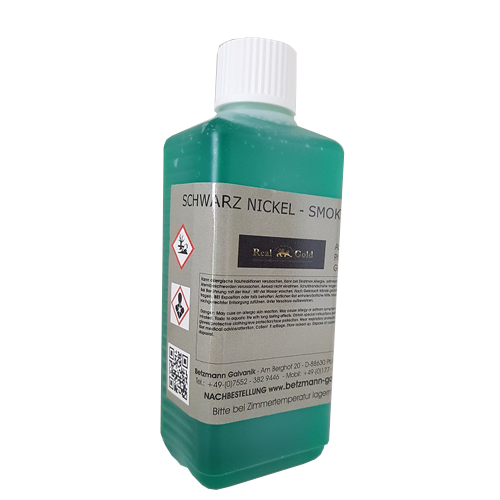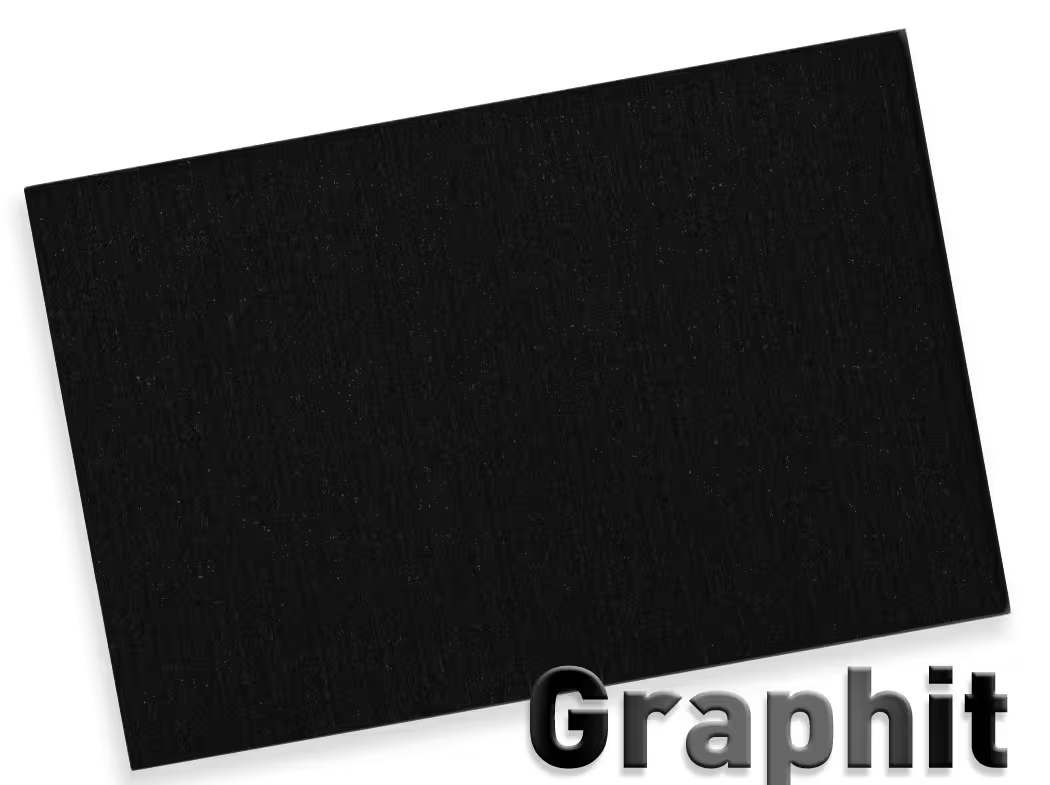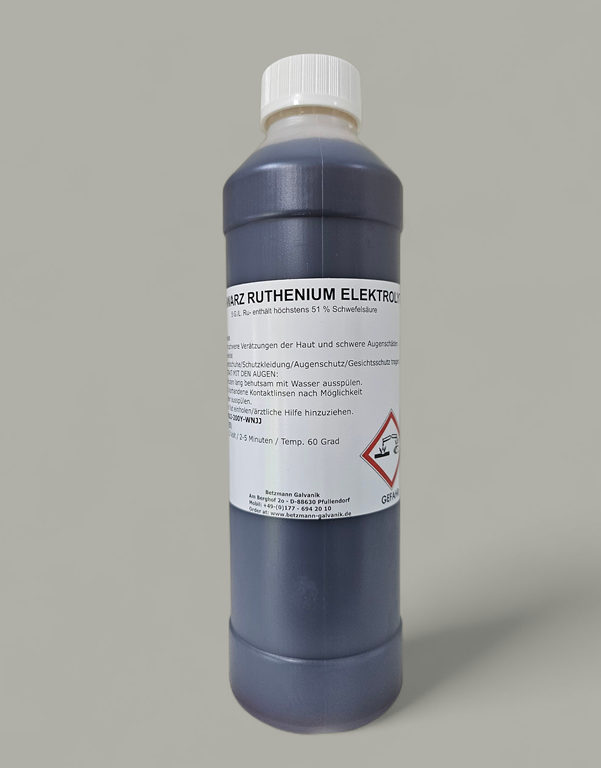Metall Schwärzen

Graphite round rod - Graphite rod anode - Graphite electrode for gold plating. Graphite electrodes are ultimate for all coatings. The advantage is that in some coatings with stainless steel electrodes, the dislodged metal parts disturb the coating. This does not happen with graphite electrodes, because graphite also filters out contaminated liquids. With bath electroplating, they also need to be replaced occasionally as they slowly dissolve during the plating process. With pad electroplating, simply loosen the screw on the handle and replace with a new one. Diameter 6 mm, length approx. 9 cm Features Used for Doesn’t contaminate Cleaner Activating and electro-cleaning Its resistive properties help to heat the solution you’re plating with Chromium plating, which needs to be plated at 25 degrees celsius; its natural heating action helps to maintain the solution’s optimal temperature Low cost Can be used for all plating processes but carbon electrodes deteriorate over a period of time and discolour swabs (discolouration does not affect the plating quality)
Black Chrome - Smoky Chrome by Betzmann Galvanik This dark anthracite to slightly black shiny look is now popular for many car parts or cell phones and is a very good alternative to black rhodium or black ruthenium. Alternative to black rhodium or black ruthenium. Black chrome is a spectacular finish and always an eye catcher. Recommended electrode: Carbon Electrode 10 Volt - Platinum electrode 11 Volt. Plating on Copper, Nickel, Gold or goldflash is possible. Operating Conditions and Deposit DataVoltage Range9 – 11 volts (see notes)Temperature20 – 30 °CLightness (L*) of deposit65 – 70%ElectrodeCarbon or Platinum Electrode (see notes)Chromium content in plate99% (balance carbon)Plating Rate at (10 volts, Carbon Electrode)Approx. 2 micron per minute (spot)Maximum plating thickness3 micronsHardness (as plated)800 Hv (see notes)Hardness after heat treatment1500 – 1600 Hv (see notes)Density of deposit7.2 g/cm3StressHi stressSpecial storage requirementsNoneShelf life1 – 2 yearsHealth and Safety classificationNot classified as dangerousSpecial considerationsNoneTransport (UN number)None: Not classified as dangerous for transport Notes:Heat treating at 220 °C increases the hardness of the deposit from 800to 1600 Hv.The voltage should be raised from 10 volts if using a Carbon Electrode to 11 volts whenusing a Platinum Electrode.We strongly advise against the use of stainless steel anodes for most of our plating processes.Plating rates are calculated over a sample area which is permanently covered by swab.
Content: 0.05 Liter (€360.00 / 1 Liter)
Smoky Nickel Solution from Betzmann Galvanik Our smoky nickel electrolyte for galvanic blackening of metals This new black nickel electrolyte conjures a dark to black surface directly on stainless steel, brass or copper! polish surface if necessary degrease and activate Black nickel plating from 3 volts optimal with platinum electrode! Like all nickel electrolytes, this one is not suitable for coating metals worn on the skin! A special surface sealing is not necessary. Temperature resistance up to approx. 200 degrees! In many cases, a base layer of normal nickel is recommended for components made of the metals mentioned for long durability, especially on copper and its alloys in outdoor applications. This increases the corrosion resistance and leads to better results. For this bright nickel layer we recommend the normal nickel Free. Before applying the Smoky Nickel, prepare the component with great care to achieve the best results. This includes, above all, thorough cleaning and absolutely grease-free surfaces. Therefore, remove all impurities such as dirt, flash rust and the like and use for our electrocleaner! Wear protective gloves already during the degreasing process to prevent skin grease from being deposited on the component. The black nickel is suitable for use in bath electroplating as well as for pin electroplating. The following anodes are suitable for the smoky nickel: Nickel anodes Graphite anodes Platinum anodes Stainless steel anodes permitted for pin electroplating For plating, the anode is switched to positive and the workpiece to negative. Observe the formation of gas bubbles closely during the electroplating process. If too many gas bubbles rise on the workpiece, the voltage must be reduced. This also applies if an intense black coloration appears in places. If no deposition occurs, the voltage is too low and must be carefully increased. All in all, deposition is slower with black nickel electrolytes than with normal nickel electrolytes. Wear appropriate protective clothing throughout the process and ensure good room ventilation. Operating Conditions and Deposit DataVoltage Range3.0 – 4 voltsTemperature18 – 40 °CNickel Concentration74 g/lElectrodeNickel (strongly preferred), platinum or carbonNickel content in plate99.9% (balance carbon)Plating Rate at (3.5 volts, Platinum electrode)Approx. 0.3 micron per minute (spot)Hardness630 – 640 MPa (Vickers)Density of deposit8.9 g/cm3StressHigh stressSpecial storage requirementsNoneShelf lifeOver 5 yearsHealth and Safety classificationHarmfulSpecial considerationsNoneTransport (UN number)None: Not classified as dangerous for transport Notes:We strongly advise against the use of stainless steel anodes for most of our plating processesPlating rates are calculated over a sample area which is permanently covered by swab.Nickel Brush Plating Solution plates a slightly whiter shade than Nickel Pen Plating Solution. HS Code: 3824 99 70
Content: 0.05 Liter (€240.00 / 1 Liter)
Product description "Graphite plate electrode". Graphite plate electrode for bath electroplating highly compressed ("isostatically pressed"), wear-resistant fine-grain graphite excellent conductivity and chemical resistance plate thickness 4 mm available in sizes 50 x 80 mm, 100 x 150 mm and 170 x 200 mm for bath electroplating and electrolysis, use: electrolytic cleaning, gold plating, silver plating, chrome plating, degreasing as working or shielding surface for high temperature applications Graphite electrodes are generally used in plating with chrome, copper, white bronze, rose gold, green gold, black chrome, black ruthenium, black rhodium, activation. Actually, the graphite electrode is ultimate for all coatings. The advantage is that in some coatings with stainless steel electrodes, the dislodged metal parts disturb the coating. This does not happen with graphite electrodes, because graphite also filters out contaminated liquids. They also need to be replaced occasionally as they slowly dissolve during coating. Features Used for Doesn’t contaminate Cleaner Activating and electro-cleaning Its resistive properties help to heat the solution you’re plating with Chromium plating, which needs to be plated at 25 degrees celsius; its natural heating action helps to maintain the solution’s optimal temperature Low cost Can be used for all plating processes but carbon electrodes deteriorate over a period of time and discolour swabs (discolouration does not affect the plating quality)
Black ruthenium from Betzmann Galvanik Product information “Black ruthenium bath with 5 gram / L Ru The black ruthenium bath deposits dark to gray-black ruthenium layers. The ruthenium electrolyte works to maintain gloss and a high level of color consistency is achieved. The coatings are non-slip and impress with their decorative color. The maximum achievable coating thickness is 0.2-0.5 µm. For base metals or silverware, pre-gilding or a palladium layer is strongly recommended as an undercoat. Operating data: Ruthenium content: 5.0 g/l Ru pH value: approx. 1 Density: approx. 12 g/cm3 Working conditions: Voltage: 2.2-3 volts Bath temperature: 65°C Exposure time: 2 min Anode material: Mixed oxide anodes/platinized titanium Anode/cathode area: 1 : 1 Fabric movement: required Current density: 0.5-3.0 A/dm2 Bath filtration: from 10 liters Deposition rate: 1-3 mg/amine Deposition speed: 0.02µm/min at 1.5A/dm2 Precipitation data: Hardness: approx. 800 HV Layer thickness: max. 0.5 µm Density: approx. 12 g/cm3 Safety: Hazard statements H314 Causes severe skin burns and eye damage. Precautionary statements P280 Wear protective gloves/protective clothing/eye protection/face protection. P305 IN CASE OF CONTACT WITH EYES: P351 Rinse cautiously with water for several minutes. P338 Remove contact lenses, if present and if possible. Continue rinsing. P313 Get medical advice/attention.
Content: 0.05 Liter (€580.00 / 1 Liter)
Darkener for Black Ruthenium / Black Rhodium Betzmann Galvanik - Real Gold Fill 1 ml Darkener in 10 ml Black Ruthenium or Black Rhodium and get a darker Black Ruthenium or an darker Black Rhodium Surfaces.
Content: 0.01 Liter (€1,100.00 / 1 Liter)






